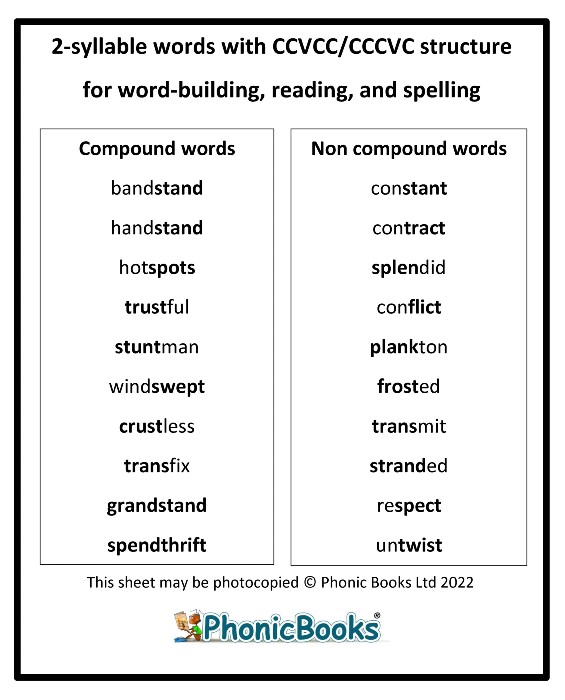The Institute of Education Sciences (IES) within the US Department of Education periodically issues free practice guides for teachers. They convene a panel, review the research, and formulate general recommendations based on the evidence. What I like about these practice guides is that they are concise, accessible, and practical. The goal is not to get into the weeds of individual studies, but to extract general principles and practices. They include specific examples of how teachers might implement the practice, discuss potential obstacles, and provide advice.
The IES recently issued a new practice guide titled “Providing Reading Interventions for Students in Grades 4-9”.
Three of the four recommendations relate to building reading fluency and comprehension. One of the recommendations relates to decoding accuracy:
“Build students’ decoding skills so they can read complex multisyllabic words.”
Those of us who work with older students know that, even if they have the skills and code knowledge necessary to read single syllables, many lack an effective strategy for reading long words. When they encounter an unfamiliar long word, they may omit or substitute endings or fall back on guessing or skipping. These habits negatively impact their vocabulary development and learning of content knowledge.
I’d like to highlight a few points that the panel emphasizes in this recommendation.
Simplicity
While there are many different strategies or routines that can be used to break down and decode multisyllabic words, the panel recommends choosing one routine. “Rather than teaching a wide array of rules, choose a routine that provides simple steps for breaking words into parts and blending those parts together to sound out the word.”
The idea of providing multiple strategies or tools can be appealing, and some programs offer a set of complicated rules that vary depending on the structure of the word. But there are a lot of mental balls to juggle as we read. Students can’t afford to stop and allocate time and energy to picking the right tool for that particular word or to using cumbersome systems to mark up and divide words. The routine could be as simple as just identifying chunks that contain a vowel sound and then blending those chunks to listen for the word.
Flexibility
English spelling is complex and not rules-based. If you teach a rule, you need to teach several exceptions or just hope that the student figures it out themselves. But as we know, they often can’t and don’t, and then they lose confidence, resorting to the guessing and skipping behaviors that are so common. The panel emphasize that the routine should be flexible. Noticing the prefix “un” in the word “unreasonable” can be helpful, but what about “uniform”? And we need to make adjustments for the indistinct “schwa” sound in unstressed syllables. Explicitly teaching flexibility and trying different sounds is therefore key. Building in this flexibility from the start will make it more likely students will apply their strategy to words in connected texts.
Feedback
The panel advises immediate application to connected text. They advise teachers to “provide frequent feedback and support to help students persevere. As students apply the routine, consistently provide feedback that affirms what they did well and explain how the students can improve their use of the routine.”
It can be quite a big leap from applying a strategy to words in isolation to applying it while reading a passage or book. As our students work though these words in connected text, affirmative and corrective feedback is a powerful tool to replace the feeling of intimidation with one of confidence.
Spelling
The panel also recommends that teachers “embed spelling instruction in the lesson.” I often ask my students to write a word syllable by syllable while saying each syllable with an exaggerated clear pronunciation. We discuss the spelling of any prefixes or suffixes and the spelling choices for particular sounds. Working on spelling alongside reading these long words is another powerful practice that helps form tight connections between speech and print.
Other helpful recommendations are to always connect the word to its meaning and to make sure to include vocabulary from core subject area content.
In addition to reading the report, you can also watch this video presentation for an overview of all four recommendations.
Phonic Books have also published a blog specifically on the topic of teaching multisyllabic words which you can read here.
#teachphonics #teachreading #readingintervention #readingtutor #strugglingreaders #teachspelling #howtoteachreading #syllabletypes
***
This is a guest blog by Miriam Fein. Miriam is a speech-language pathologist and licensed reading specialist. She lives near Boston, Massachusetts, and supports students from early elementary through high school with reading, spelling, writing, and language skills. She believes in the power of evidence-informed, systematic, and compassionate teaching for all learners.


